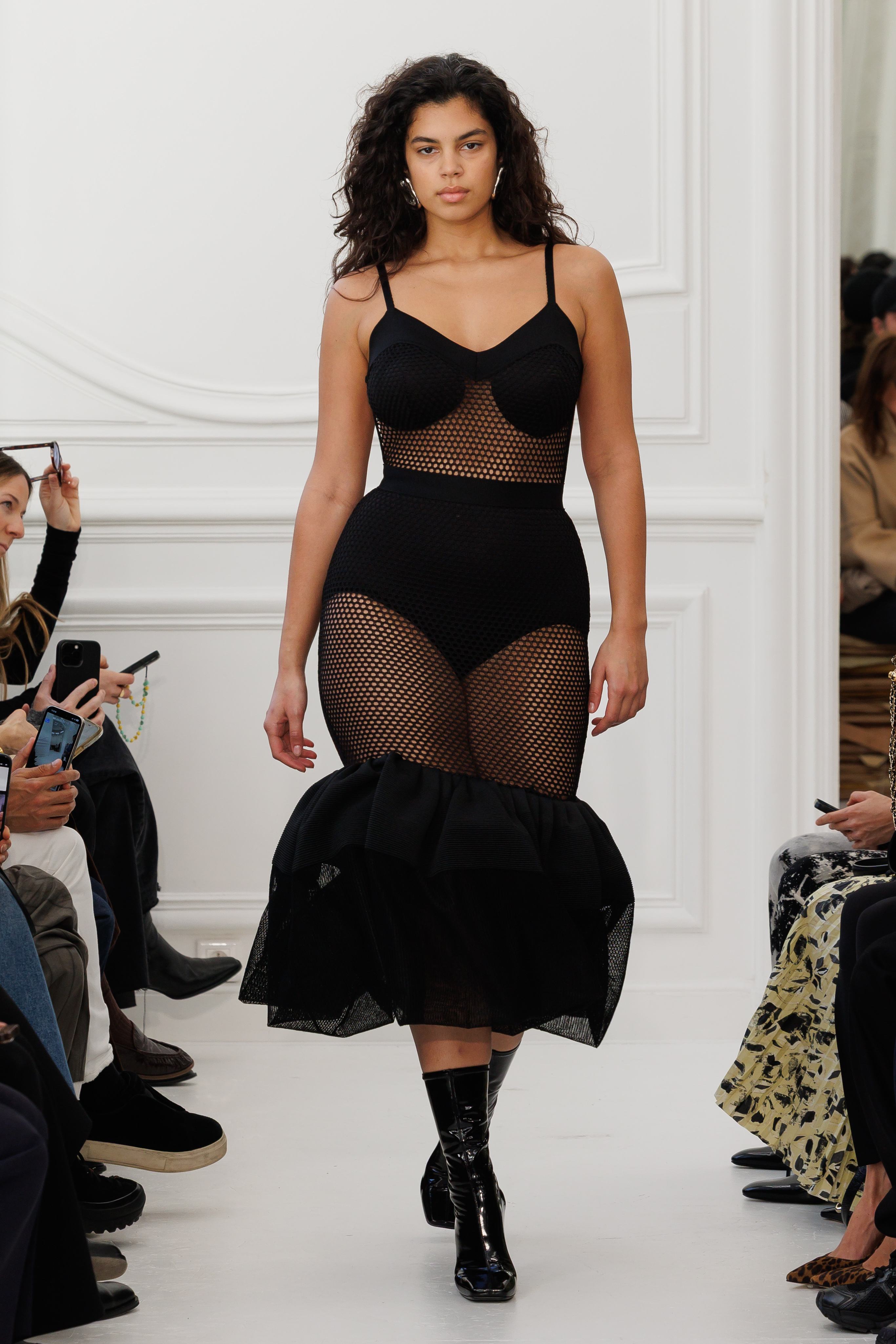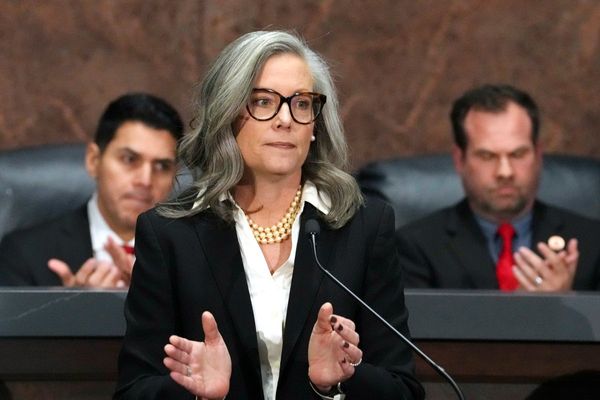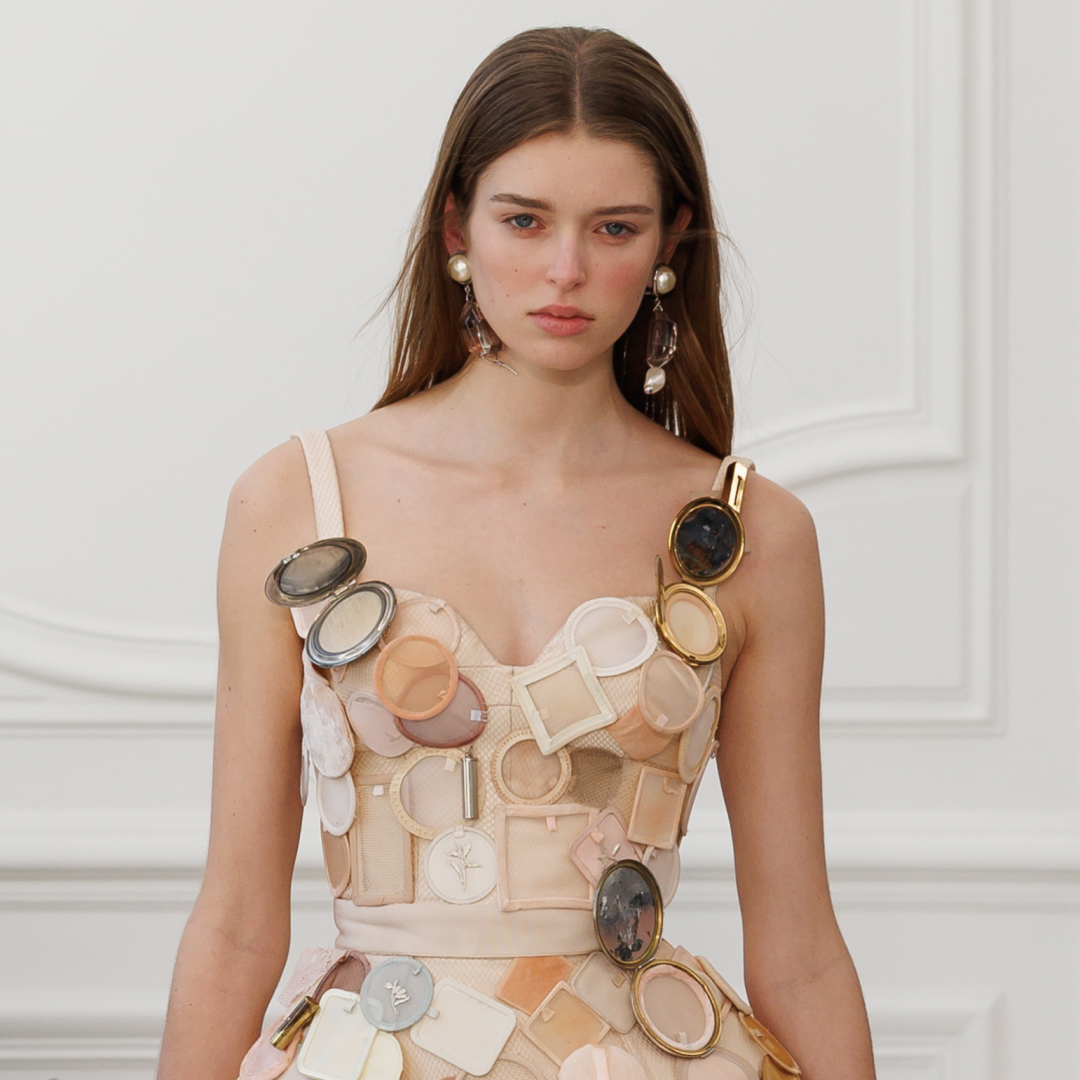
You didn't need a seat at Sarah Burton's Givenchy debut to see it first-thing on Friday morning. The hallowed halls of 3 Avenue George V, Givenchy's Paris address since 1955, quickly made the rounds on social media as the March 7 runway unfolded.
Burton's first Paris Fashion Week has been highly anticipated, especially after the designer teased her direction—heavy on lace and 1950s references—with Elle Fanning's 2025 Oscars red carpet look. Then, Kaia Gerber soft-launched another Givenchy look on Instagram, equally referential to the house's founding decade.
When the proverbial curtains finally rose over the runway days later, it appeared those teasers were on the money. Archival references abounded in full skirts and demure lace. But X and Instagram posters latched on to one of the more audacious designs from the former Alexander McQueen creative director. It was a flesh-toned mini bustier dress, entirely covered in antique powder compacts. Notes shared on X showed the dress aimed to evoke the model "spilling the treasures of her handbag," with powder puffs and mirrors splayed from the sweetheart neckline down to the hem of her mini skirt.
Was its purpose, as Marie Claire beauty director Hannah Baxter posited, to show how fashion can mitigate the beauty waste dilemma by reusing cast-off containers? Was it to get an early in with an A-list founder like Selena Gomez or Kylie Jenner—beauty moguls who could definitely wear it on a red carpet? To spawn a few hundred "That's so me" posts from viewers around the world? None of the above—though the last point is closest.
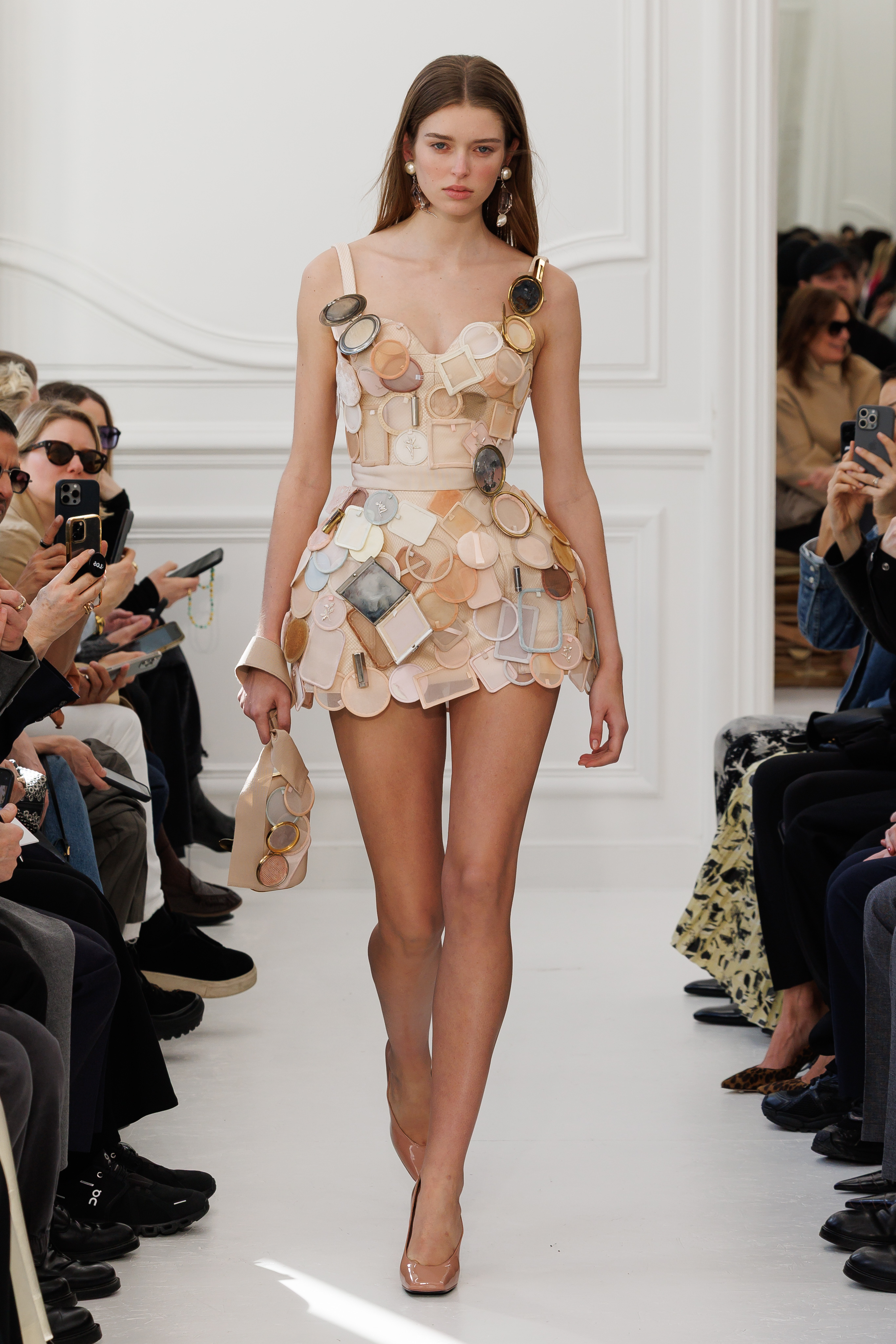
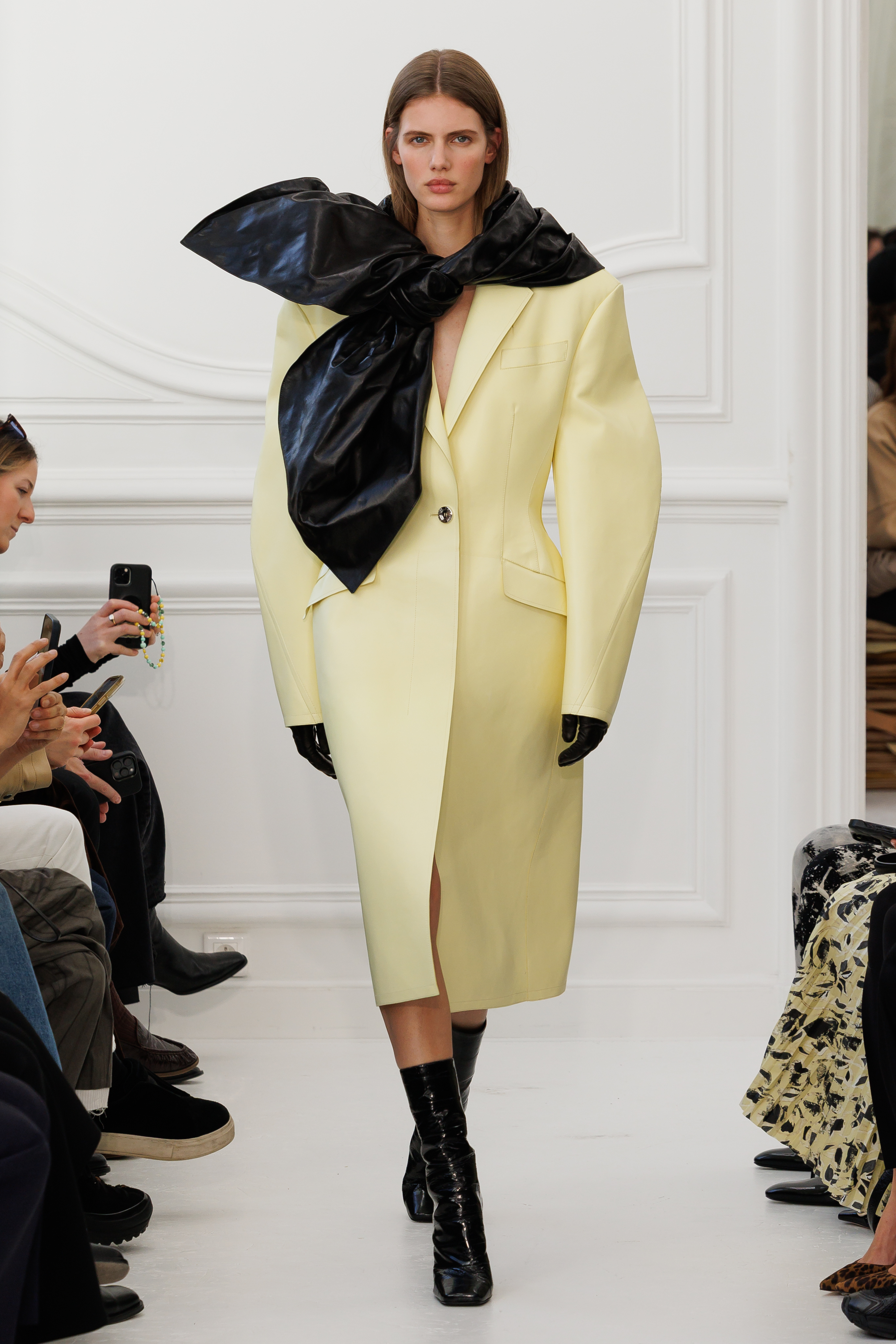
A dress resembling the inside of a tote filled with the bounty of an estate sale or a makeup artist's fashion month dopp kit is one facet of the creative director's thematic gear-shift for the famed French house. "I want to address everything about modern women," Burton wrote in her inaugural Givenchy runway show notes. "Strength, vulnerability, emotional intelligence, feeling powerful or very sexy. All of it."
That's a tall order for any single runway collection, yet she managed to do across her 52-look presentation. Burton was inspired by a recent discovery of patterns from founder Hubert de Givenchy's debut collection back in 1952, uncovered while his home was being renovated. Those designs, with their hourglass waists and exaggerated shoulders, were the foundations of how modern women dressed at that time.
Burton referenced that past while reimagining how women can dress for the present. Take, for example, exaggerated shoulder scarves modeled after originals from 1952, or the bevy of longline coats and suiting with a slightly structured waist. These are pieces displaying Burton's eye for "fifties foundations" that any 2025 working woman could wear.
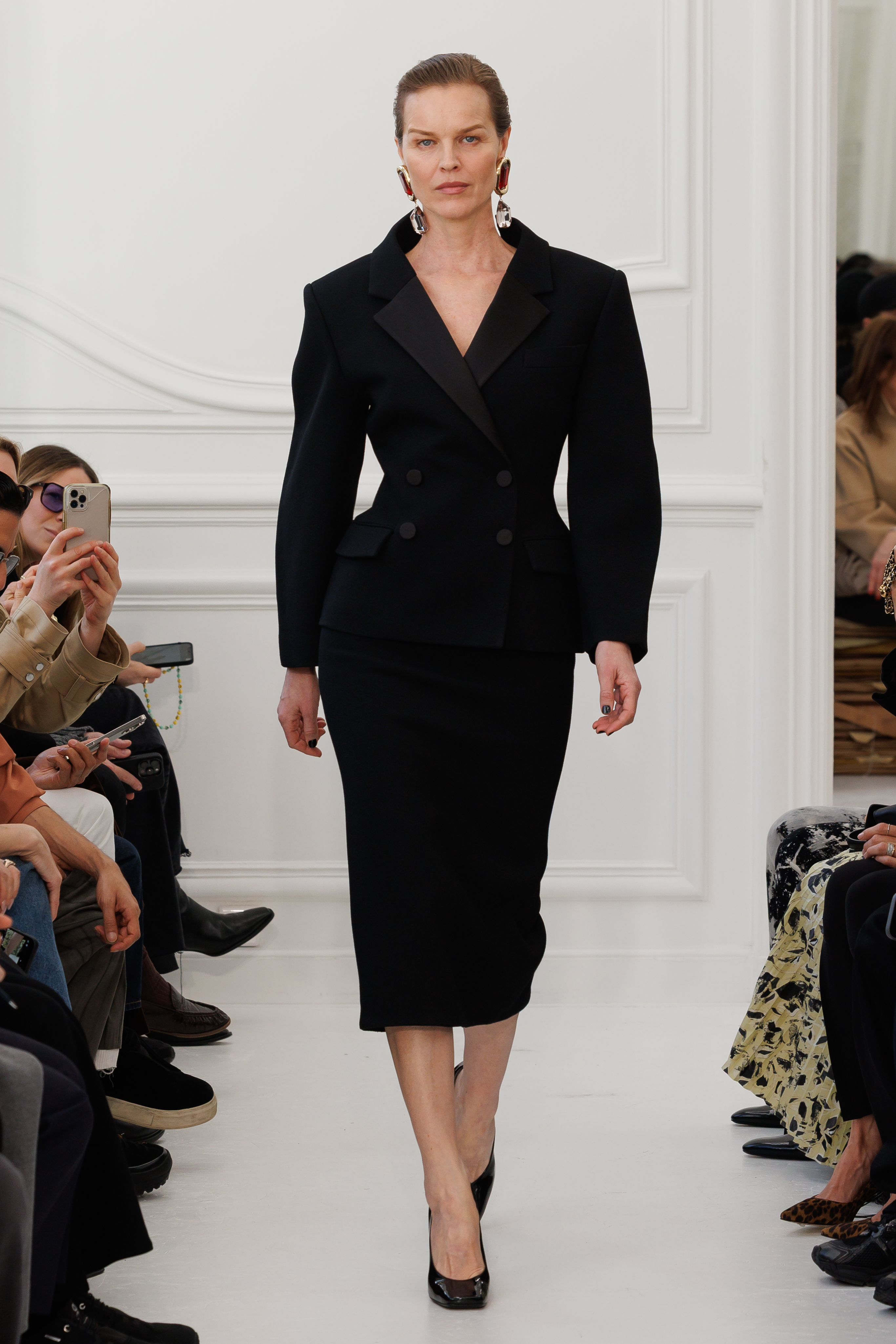
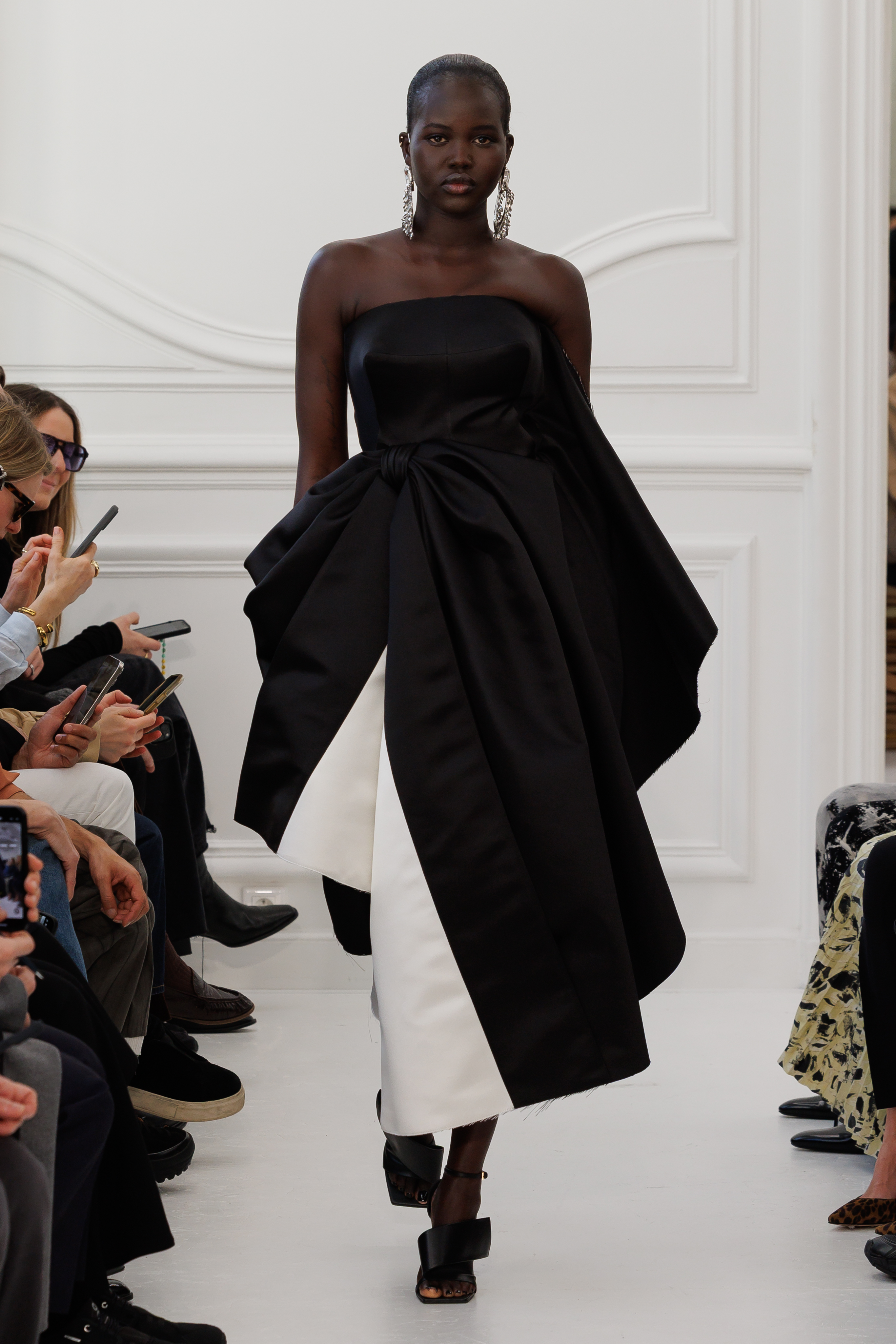
Burton's Givenchy was one of the few runways I've seen throughout Paris Fashion Week with somewhat size- and age-inclusive models. The casting suggests her vision of the new Givenchy woman is multifaceted. In other words? We could all see ourselves reflected in the Givenchy era to come—and not only that compact mirror dress.
